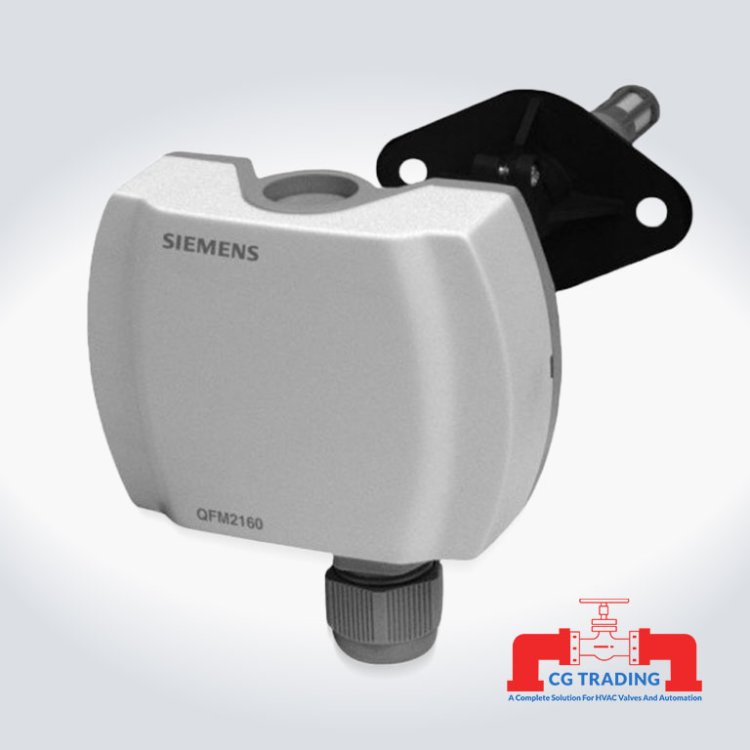What is a Temperature and Humidity Sensor & How Does it Work?
Share this Post to earn Money ( Upto ₹100 per 1000 Views )
Infrastructure is the backbone of data centres and facilities, therefore temperature and humidity control are crucial. Sudden variations in humidity and temperature can damage critical equipment, particularly servers. If computers are not properly maintained, they may overheat, which results in significant damage and financial loss. This demonstrates the importance of efficient cooling, which can even prevent unexpected downtime.
What is a temperature and humidity sensor?
A temperature and humidity sensor is a low-cost electronic gadget that detects, measures, and reports on wetness and air temperature. The ratio of visible moisture to maximum moisture at a given air temperature.
It is one of the most essential devices used in consumer, industrial, biomedical, and environmental applications to measure and monitor temperature and humidity in a specific region, such as a data centre or server room.
Temperature and humidity measurements are significant in most businesses since they contribute to the safety of all critical equipment that may have an impact on the entire operation.
How Does Temperature and Humidity Sensor Work?
According to some experts, temperature and humidity sensors measure the capacitance or resistance of air samples. Most of these sensors use capacitive measurement to assess the quantity of moisture in the air. This type of test uses two electrical conductors with a non-conductive polymer sheet positioned between them to create an electrical field.
Moisture from the air gathers on the film, altering the voltage levels between the two plates. This change is subsequently transformed into a computerised measurement of the air's relative humidity, taking the air temperature into account.
Types of Humidity Sensors
When purchasing a humidity sensor, you may pick from three types:
-
Capacitive: This linear sensor detects relative humidity from 0 to 100%. It has a metal strip between two electrodes.
-
Resistive: These humidity sensors use ionised salts between two electrodes. The resistance of the electrodes fluctuates when the humidity level rises or falls.
-
Thermal: These humidity sensors have two distinct sensors, one under a layer of dry nitrogen and one that freely measures ambient air. The humidity level is what differentiates the two measures.
Keep in note that capacitive and resistive sensors measure relative humidity, whereas thermal sensors detect AH.
Where should a temperature and humidity sensor be placed?
First, go as far away from electronic and electrical devices as possible. Second, position the sensor vertically, at least 6 feet above the floor. Finally, place the sensor in the centre of the room or in a well-ventilated area to ensure that it correctly reflects the humidity across the room.
How do you choose the best temperature and humidity sensor for your project?
First, the frequency response characteristics of the temperature and humidity sensor establish the frequency range that may be detected, and the measurement circumstances must not be distorted within this range. In fact, the sensor's reaction is constantly delayed. The better. The sensor has a high frequency response and a wide frequency range for the measured signal. The mechanical system has a high inertia due to its structural properties. The frequency of the sensor's detectable signal at low frequencies is low.
Second, consider the linear range of the temperature and humidity device. This is the range in which the output is proportionate to the input value. In principle, the sensitivity remains constant over this range. The bigger the sensor's linear range, the greater the range, and it may provide definite measurement accuracy. When picking a sensor, after the kind is decided, it is vital to assess whether its range fits the criteria.
Finally, stability refers to the temperature and humidity device's capacity to remain constant throughout time. In addition to the sensor's construction, the sensor's usage environment is a major element influencing its long-term stability.
Before picking a sensor, you should research its usage environment and choose the suitable sensor based on the situation.
Benefits of Remote Monitoring:
Manually tracking temperature and humidity with static controls like thermometers and hygrometers is time-consuming and error-prone since it depends on staff accuracy in data collection and reporting. Environmental changes may also occur between scheduled checkups or after hours.
Integrating temperature and humidity sensors with a remote monitoring system allows for real-time monitoring of these essential parameters from a computer, phone, or other web-enabled device. It does more than just log data; it also assures correct temperature and humidity regulation 24 hours a day, seven days a week. Additional benefits include:
-
Humidity and temperature monitoring from anywhere, at any time without the need for extra software.
-
Secure web-based control of several sites from one source
-
Immediate notice of fluctuating temperatures and humidity levels
-
Saves time and money by removing the need for manual checks.
-
Access to information is restricted to assigned persons.
-
Improved staff openness and accessibility, secure cloud-based data storage, and use of historical information for regulatory compliance.
Beyond Data Monitoring
Remote monitoring devices may be programmed to send out alarms when circumstances deviate from predefined thresholds. When temperature and humidity levels deviate from predetermined limits, the humidity and temperature monitoring system promptly notifies specified staff via phone, text, or email. Employees can take prompt action.

Data collected from remote monitoring systems may be analysed to discover operational patterns and make modifications that optimise conditions, save money by using less energy, and guarantee timely equipment maintenance. Facilities can make better judgements with more control and visibility over temperature and humidity conditions. Furthermore, past information can be used to demonstrate compliance with regulatory rules.















